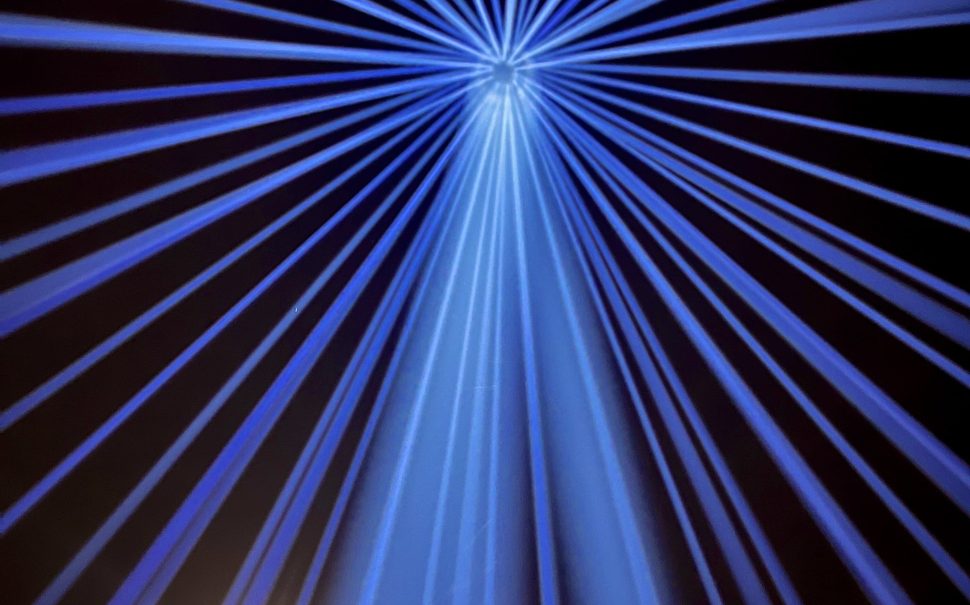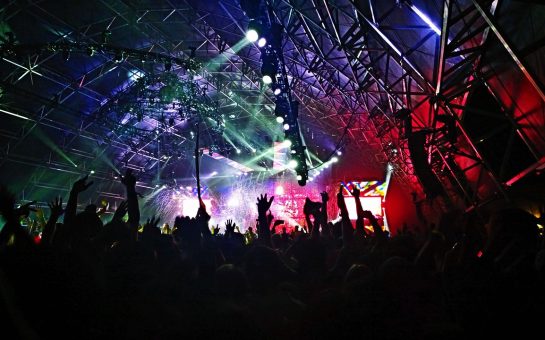New arts venue Factory International is lighting up the dark nights of January with its latest installation, First Breath. Every night from 4pm to 10pm, beams of light illuminate Mancunian skies from the River Irwell, as the £210 million warehouse-theatre space gets ready to open in June.
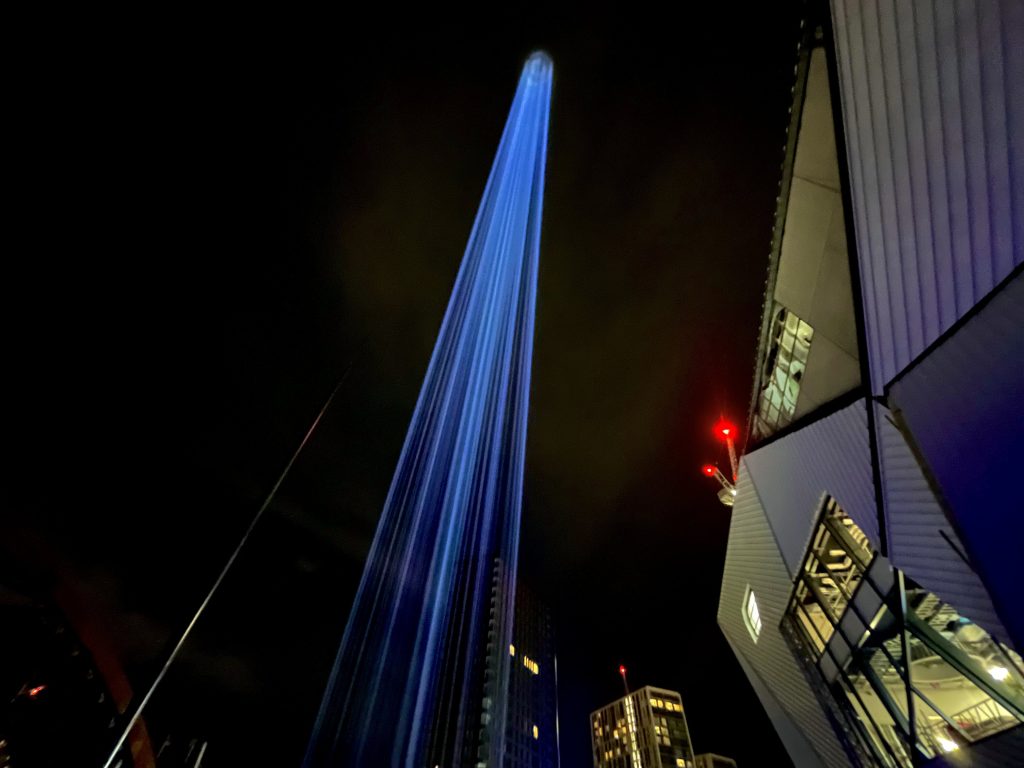
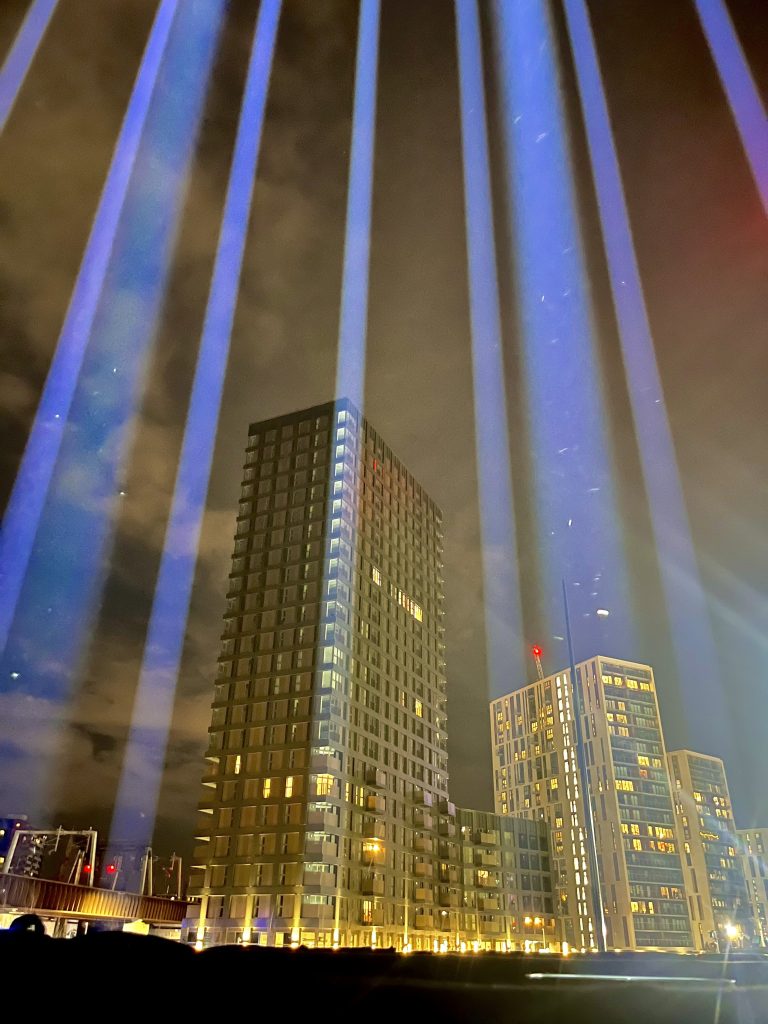
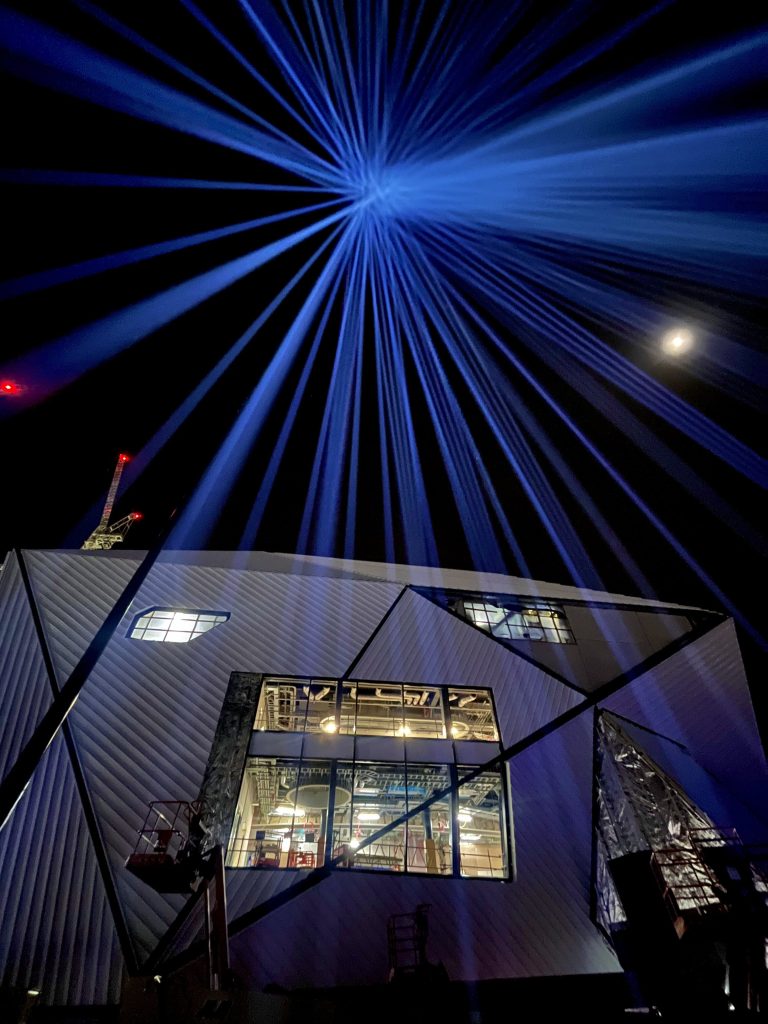
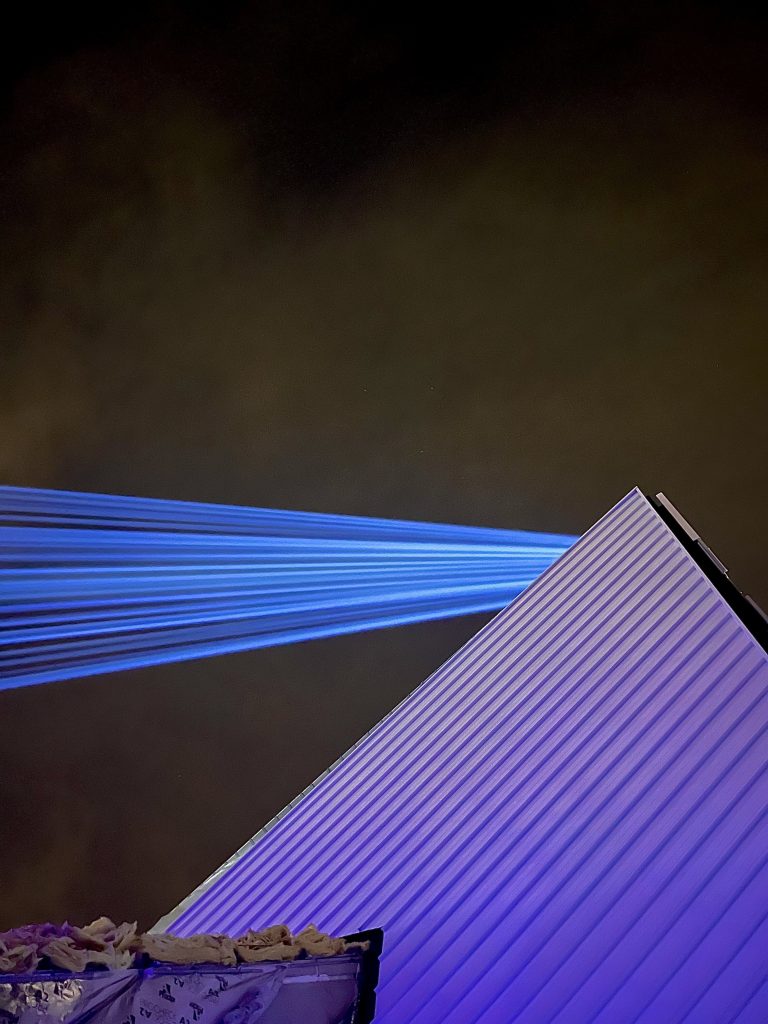
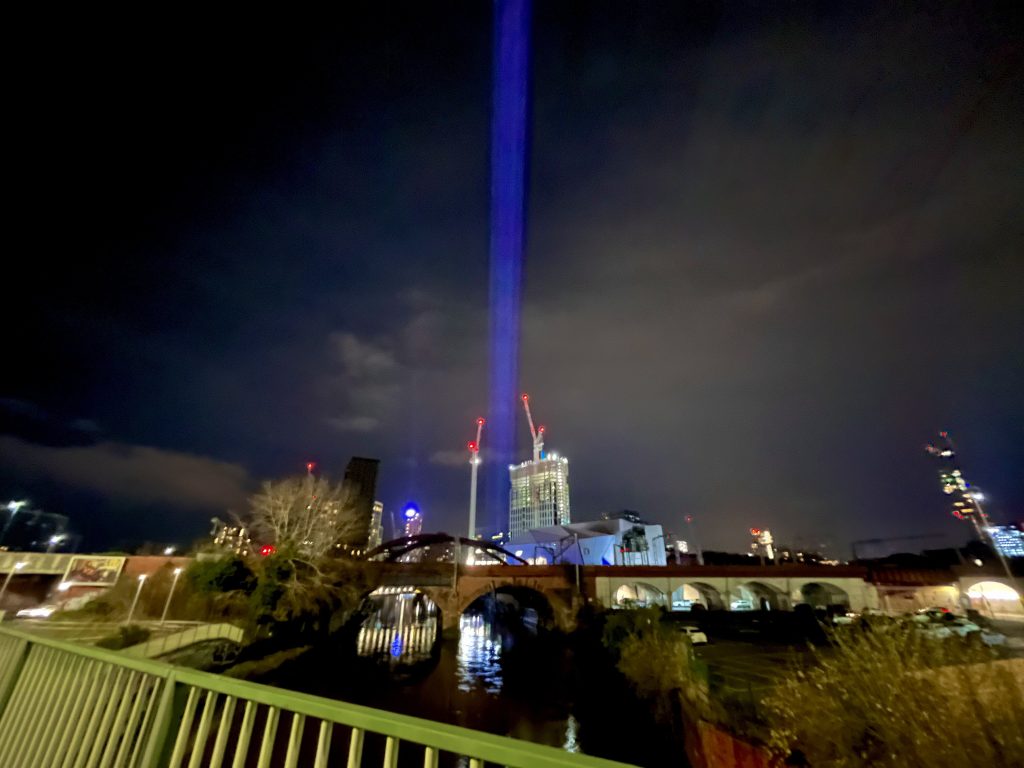
First Breath, which uses energy efficient light beams and can be seen from anywhere in the city, was inspired by the birth of artist Luke Jerram’s first child.
“This new artwork is designed to celebrate the moment a child is born – the extraordinary moment when they take their first breath and a new life arrives in the world,” explains Jerram, who says the gentle ‘pulsing’ of the beams represent the 70 babies born, on average, in Greater Manchester every day.
The light exhibition of blue beams has brought together a group of expecting parents, who were asked to sign up to be a part of First Breath ahead of Factory International’s opening this summer.
“Speaking to those parents, lots of them have talked about the community,” Factory International’s Oscar Lister. “They have met other people in ways that they would never have done and they’re from different walks of life, from different parts of Manchester.
“That’s a really lovely story in and of itself.”
Those parents, and their future children, have all been given lifetime memberships to the mega-venue – built on the site of the old Granada Studios – granting them access to events in seasons to come. Factory is also looking to host birthday parties for these babies in the future as they grow up with the building and, as Lister reflected, “they’ll be on that journey with us as we open”.
Is Factory International to Manchester what a newborn baby is to a young family? Yes, according to chief executive John McGrath.
“As we welcome hundreds of new-borns into the world through Luke’s light sculpture, we will also be breathing life into our new building,” said McGrath, who is also artistic director of the Manchester International Festival. “We hope it sets in motion a fruitful life-long relationship with a new generation.”
As well as being the new permanent home for Manchester International Festival, the city’s biennial international arts festival, the much-anticipated venue will host an array of music concerts, dance performances, theatre shows, art exhibitions, and digital experiences all year round.
The building hopes to engage with younger audiences beyond Jerram’s installation, though. They’ve worked with around 200 school children as part of a pilot partnership programme, sending artists into schools to help develop projects that can be delivered in conjunction with the national curriculum.
Lister explains: “As more projects come to life throughout the building, we’re looking at how each of those projects can have a supporting education programme that travels around to different schools, brings young people into the building and gets them excited about arts and culture.”
And despite its enthusiastic community outreach, a shred of mystery clouds the arts space, the first of its kind in Manchester. People will have to wait until June to see what’s brewing inside the ominous exterior of this closely guarded secret.
With its sublime, extraterrestrial appearance and foreboding scale, you’d be forgiven for thinking this city-centre warehouse was a spaceship.
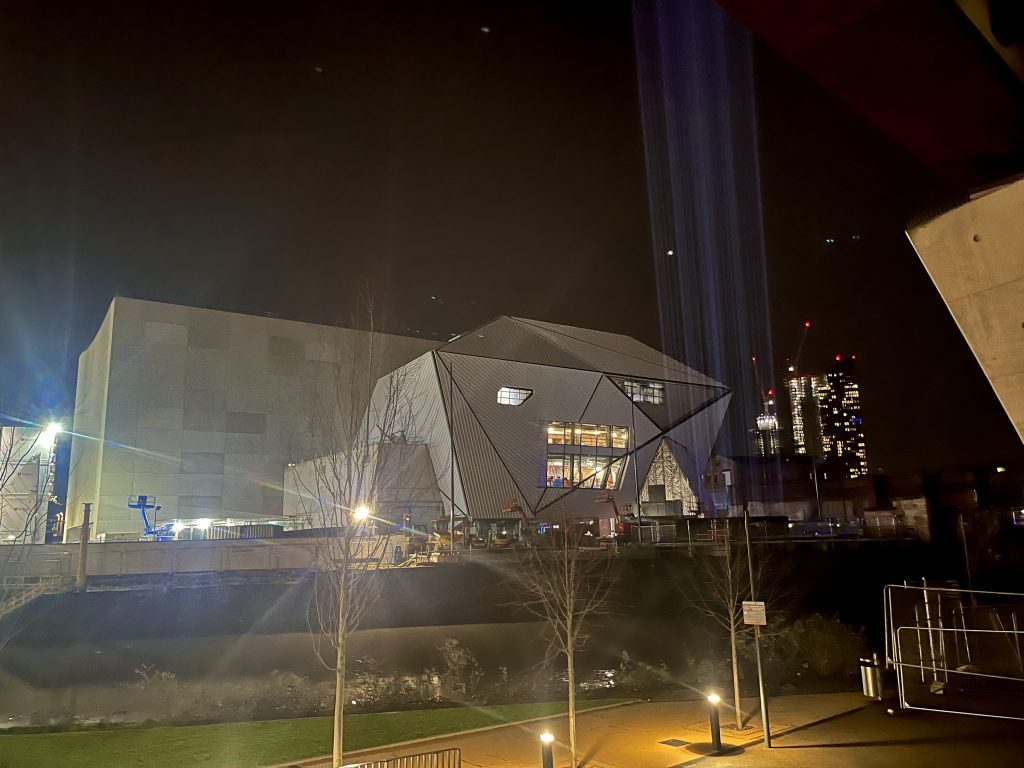
“What would you do if you had all limits taken away from you?”
Oscar Lister, Factory International
Architectural firm OMA is the mastermind behind the cavernous project. Its previous creations include the Seattle Central Library – dubbed the world’s most “instagrammable” library – and an exhibition space for Dior at the Museum of Contemporary Art in Tokyo.
When creating the Factory, OMA looked to the sorts of work MIF had done in the past. The venue is to be the event’s permanent home, so the building needed to match the Festival’s versatility and size.
“Whether that’s in huge warehouses, shopfronts, tunnels, or underneath the station, they wanted something that could house all of those different kinds of projects, and more,” Lister said.
“It’s a huge space, designed to let an artist imagine what you could possibly do with this building. We really want to test artists to go, ‘Okay, here’s a space of imagination and possibility. What would you do if you had all limits taken away from you?'”
But this artistic freedom has come at a cost. The construction of the building was financed by a number of partners, including Manchester City Council, and has exceeded the initial budget by more than £100 million.
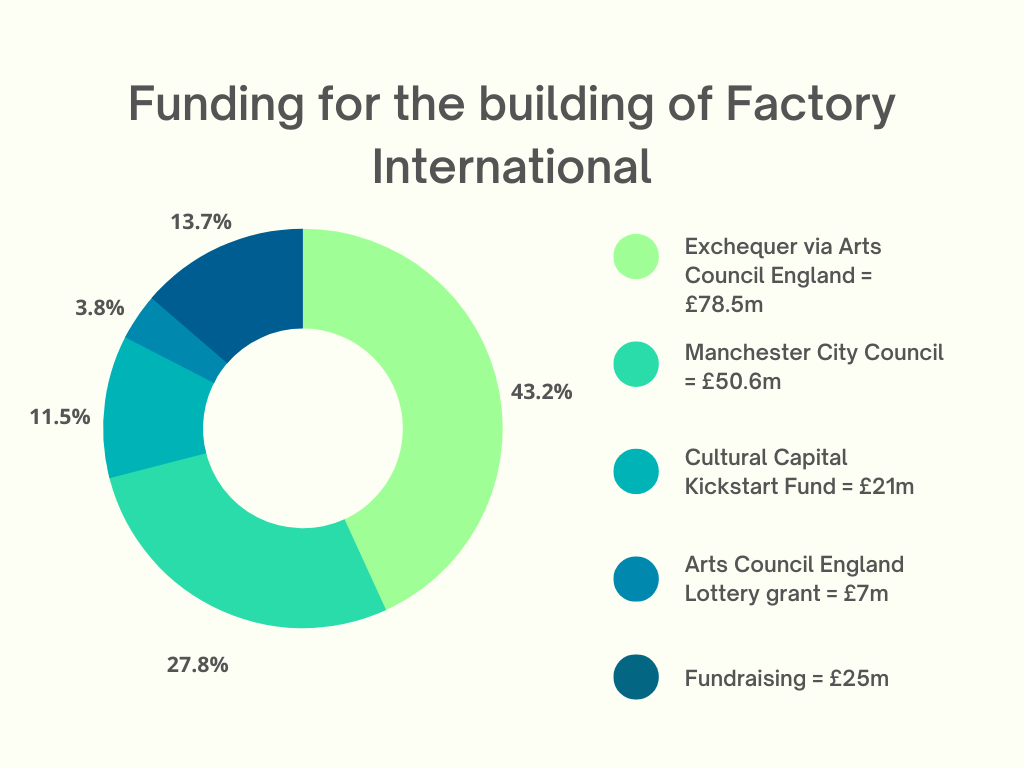
So far, Factory has announced two major projects, the first of which is an exhibition from renowned Japanese visual artist Yayoi Kusama. She’s known for her mesmerising infinity mirror rooms, where tickets are hotly in demand at London’s Tate Modern.
But for Factory’s warehouse space, she’ll be creating what promises to be her largest immersive installation yet. This will form the centrepiece of MIF, launching on 29 June.
And later in the autumn, the space will host Free Your Mind, a dance adaptation of the Matrix films, curated by director Danny Boyle. The production will bring together internationally-renowned choreographers Boy Blue, designer Es Devlin (whose clients include Beyoncé, Adele and Louis Vuitton), award-winning writer Sabrina Mahfouz, and hundreds of performers who will fill the entire building.
According to Lister, the space’s unique selling point is not just its capacity to showcase works on a grand scale, but also its ability to bring together different disciplines: from theatre, to visual arts, to music, to poetry.
It is this very collaborative element that underscores Factory’s very name. It’s inspired by a variety of influences, Manchester record label Factory Records perhaps being the most obvious one. In fact, Peter Saville – the graphic designer behind the Haçienda logo and New Order’s Unknown Pleasures album cover – also sits as an artistic advisor for Factory International.
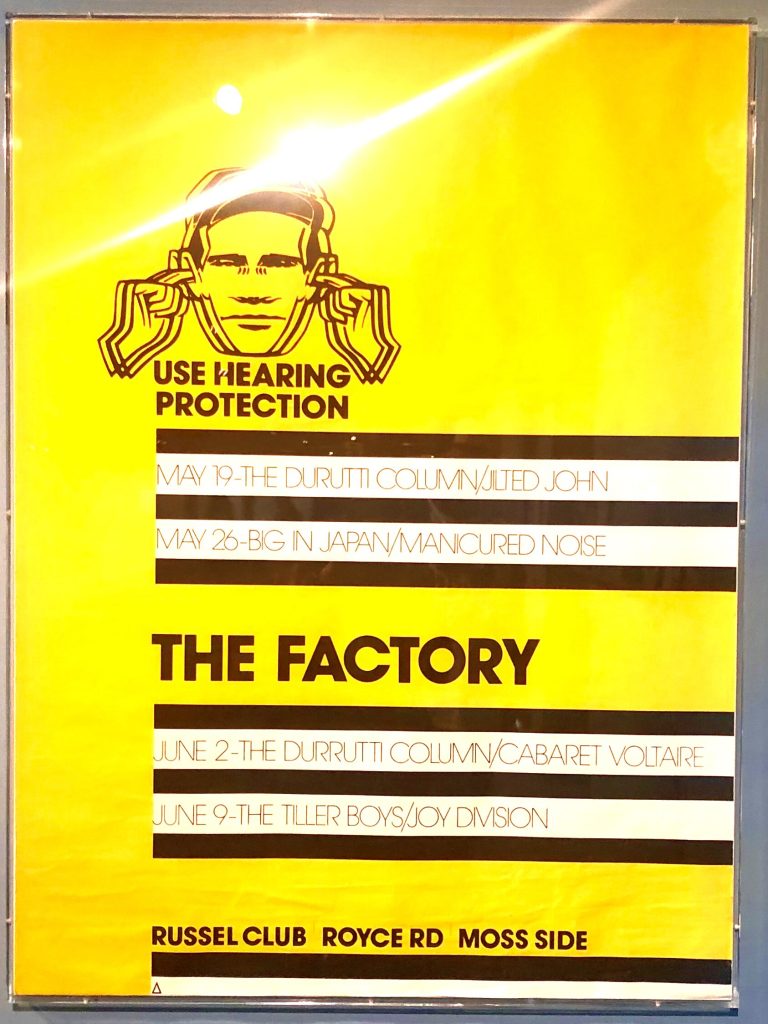
But while Tony Wilson’s legendary record label remains a crucial part of Manchester’s recent history, Factory hopes to take its legacy to refresh the term in a way that’s bigger than just the label.
“Andy Warhol’s Factory in the States is a big influence,” explains Lister, influenced by “the idea of a house where creatives are free to be who they are and express themselves in all these beautiful ways”.
It’s also, perhaps most poignantly, a nod to Manchester’s industrial past, as a hive of creation and invention. Factory is the latest in a long line of spaces in Manchester where work is made and taken all around the world. For evidence of this, one need look no further than the very foundations upon which the building stands.
Lying on the bank of the River Irwell – a space which for years had been largely untrodden – Factory stands at the heart of the new Enterprise City, the new commercial district in the city centre. The product of the developers behind Spinningfields, this is shaping up to be a vibrant hub of commerce and creativity. It’s home to a host of swanky new office buildings like the ABC and Bonded Warehouse, and later this year it will be joined by esteemed members’ club Soho House.
This plot sits on what used to be Granada Studios, but even before that, this area had a huge life of its own as a trading centre with markets and warehouses. Below is a map of the area, with an overview of its past, present and future.
Now, the site reflects Manchester’s new industrial revolution as a buzzing centre for technology and innovation. Andrew Hirst is the owner of a tech-based business which moved from the Northern Quarter to Enterprise City in 2021.
“We as a business need to change and grow up and moving here helped with that,” he said.
The lights, it seems, are just the beginning.
